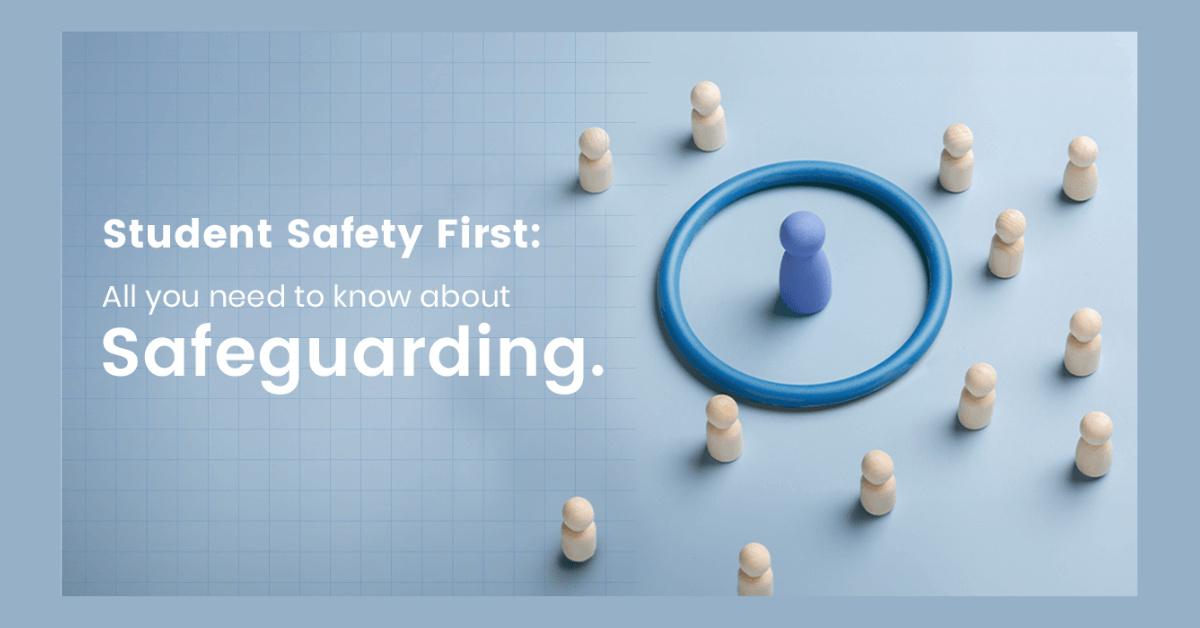School plays a significant role in the lives of growing children—often dubbed a second home. As a result, it naturally becomes the responsibility of a school to create a safe and comfortable learning environment for a child, taking into account all aspects of child safeguarding.
Safeguarding children is a need at a foundational level to protect them from any harm and ensure their best interest. But what is safeguarding exactly?
Safeguarding: A Collective Social Responsibility
The world around us can subject us to difficult situations. While adults have the agency to recognise potentially risky situations, a child must be protected and taught to be wary of them. Children may not even be aware of what to look out for, how to protect themselves, or what to do in a situation that calls for action. People who work with children on a regular basis – teachers, staff, and parents, don’t just have the responsibility to protect children, but also to help them recognise these situations and provide a space for them to be heard.
This is where safeguarding comes into play, putting into practice certain policies to follow, offering a framework of security for children when they are outside the safety of their homes. With safeguarding practices in place, children are protected from hindrances to their physical, mental, and overall well-being.
The Child Safeguarding Policy of the Office of the Special Representative of the Secretary-General on Violence Against Children (OSRSG VAC) is a regulatory body under the United Nations, under which policies have been defined. Not only do these terms aim to safeguard, but also to ensure there is no discrimination among students.
A Step Towards Protecting Students
In a school setting, a student should not have to worry about their safety or have any anxieties about their surroundings. Safeguarding therefore becomes of priority to protect them from harm inside and outside the classroom. From the perspective of administration, teachers and staff are regularly trained to prioritise ensuring child safety above all else, since these issues may seriously affect their growth and development.
Children could be exposed to negative situations in different ways and understanding the effects of each is imperative in helping them out of harm’s way. Let us take a look at the nature and types of abuse students might face.
Physical abuse is harm that is inflicted on an individual’s body. Any type of bodily harm, including kicking, punching, hitting, or the use of objects to harm a child, are considered as forms of physical abuse. Injury is not the only impact on the victim; the lasting psychological impact of physical abuse can be an equally harmful result.
Some signs to look out for include bruises, cuts, fractures, or unusual behaviour. Fully covered clothing could also be used to hide visible marks of physical abuse.
Emotional abuse refers to the various ways in which a child’s psychological well-being and emotional stability are put in harm’s way. Verbal abuse, manipulation, rejection, constant criticism, and intimidation are all forms of emotional abuse.
Low self-esteem, unusual behaviour, difficulty forming friendships, and emotional instability are a few possible signs of emotional abuse. If not addressed on time, emotional abuse can lead to delays in development physically, emotionally, and socially.
Sexual abuse is unfortunately a more common occurrence than we think. Going through this experience can severely traumatise a child and hinder their development. This can happen in many ways, from exposure to sexual content to touching and fondling children.
These dangers make it essential to educate children on their bodies; boundaries around what is okay and what is not. From a young age, children should be made aware of the steps they can take in case they experience any inappropriate behaviour and the fact that they have all the necessary resources for support and healing.
Neglect abuse can stem from poverty-based neglect or affluence-based neglect, both of which can significantly impact overall development. Poverty-based neglect can happen as a result of the child’s family being unable to afford basic commodities, which neglects the basic human needs of the child.
On the other hand, affluence-based neglect can happen in families who may not suffer when it comes to financial resources, but here the child’s emotional and physical needs can remain unmet in the form of emotional neglect, paving the way for a lack of proper supervision when there needs to be.
Safeguarding offers support to children to protect them from the negative effects of neglect and other abuse.
Safeguarding at CHIREC International School: An Overview
Each child is unique, and their ways of dealing with harm may also vary. We at CHIREC International School employ several extensive measures to ensure that our students are mentally, physically, and emotionally safe. Routine safeguarding practices like safety training, staff awareness, and other activities are put in place to uphold our standards of safety.
Safeguarding Mechanisms
An avenue of trust and understanding is crucial for children, particularly those who experience any kind of emotional or physical harm. Our designated staff members are imbued with the responsibility
To ensure our purview of maintaining child safety standards is as thorough as possible, the school has aligned a team of members to oversee the safeguarding activities in the school.
The Designated Safeguarding Manager is the head of the team, responsible for the overall implementation of safeguarding practices in the whole school. Since the school has students across different curricula, Associate Designated Safeguarding Leads or ADSLs are in place to oversee student safeguarding issues in each curriculum.
Further, the school has put Deputy Designated Safeguarding Leads or DDSLs in place, bifurcated by grades. One DDSL is in place for grades 1 and 2, grades 3 to 5, and 6 to 8 each. This way, students of every age have a safe space to go to when they are in doubt or distress, and issues can be dealt with with sensitivity and care, ensuring complete attention, understanding and quick action. Safeguarding issues that may arise among students in high school, from grades 9 to 12, are overseen by the ADSLs aligned in their curriculum.
Additionally, CHIREC International School aims to protect its students throughout their school life, both inside and outside the classroom. Therefore, 2 activity teachers are aligned as DDSLs, one male and one female, available to help students address any concerns they may be having.
We Are Listening
Every child has the right to be open and honest about their problems. Children have the right to report and address harm-related issues in a judgement-free, empathetic, and safe environment.
Access to a good support system is crucial when it comes to addressing and escalating sensitive issues. Our offline post your worries box and online portals are made to help students and parents bring up their concerns with convenience and discretion. Our mechanisms are confidential and anonymity is maintained as much as possible. All the posted concerns are reviewed on a weekly basis, facilitating prompt action. Moreover, students and staff may report themselves or report other staff members too.
This model is put in place to create a fear-free space for anyone to come forward with their concerns about student safety without the fear of disclosure.
At CHIREC, We Stand to Safeguard
Supporting, nurturing and empowering students has always been one of CHIREC International School’s paramount values. With our safeguarding measures in place, we are not only aiming for comprehensive child safety; we’re dedicated to inculcating a culture of care and trust. We make sure that our staff members and teachers help students to be aware of their rights of safety, agency and to be heard free of judgement.
Our students’ families are also urged to take action when necessary for child safety. By understanding the practice of student safeguarding in CHIREC International School, parents can encourage a sense of agency in their children to speak up against harm.
Student safeguarding is not just a school policy at CHIREC International School to maintain safety in classrooms; it’s an effort to help put an end to any harm that may befall children. With extensive safeguarding practices, we strive to empower our students to become virtuous and capable members of society with a positive sense of community, ready to take on the world.





